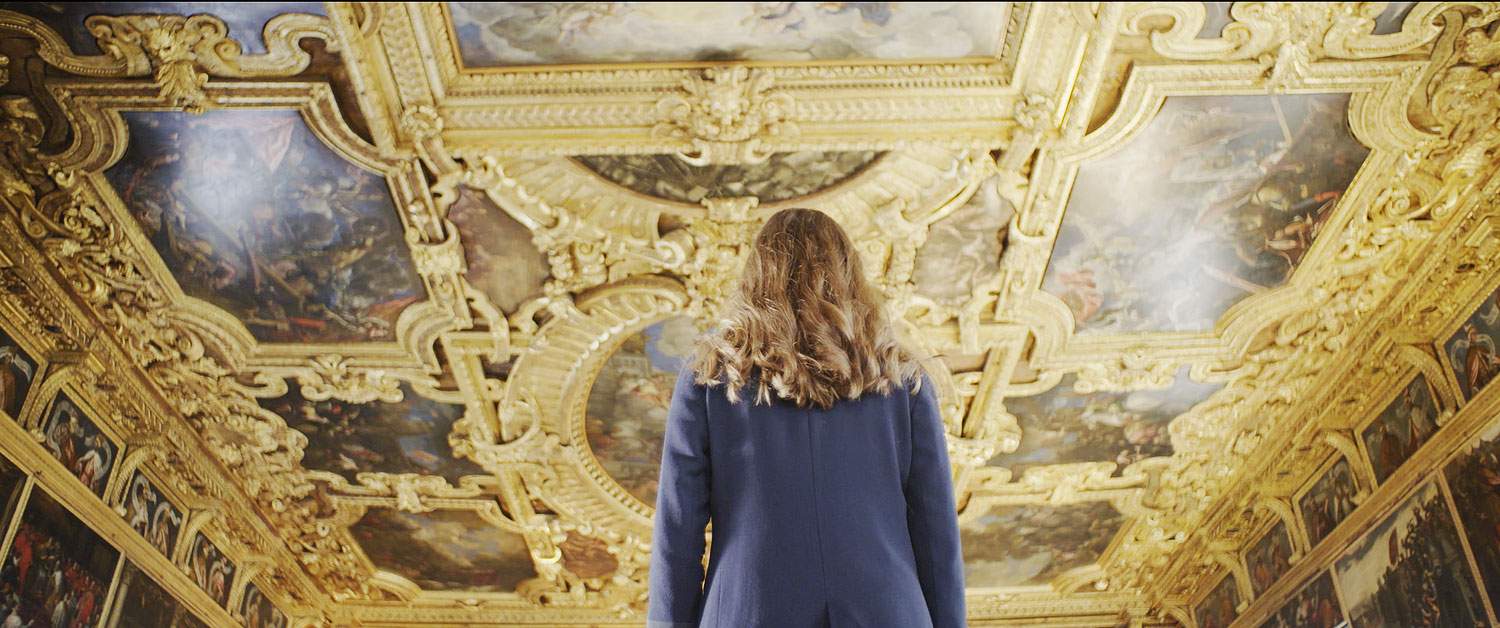Nexo's Venice film, the event for the city's 1,600th anniversary, is released in theaters
On October 11, 12 and 13, the film Venice. Infinite Vanguard, the feature film about the city in the year in which anniversary number 1600 since the Foundation falls. The film (subject by Didi Gnocchi, screenplay by Sabina Fedeli, Didi Gnocchi, Valeria Parisi, and Arianna Marelli, and directed by Michele Mally) features special guest appearances by Carlo Cecchi and Hania Rani and the narrator’s voice of Lella Costa, is accompanied by Hania Rani’s original soundtrack and is produced by 3D Produzioni and Nexo Digital with the collaboration of Villaggio Globale International, with the support of Intesa Sanpaolo and with the special collaboration of Fondazione Musei Civici di Venezia.
Venice. Infinite Avant-Garde is a documentary film that takes off from theimmense Venetian heritage to tell the story of the palaces that house masterpieces and historical objects, the artistic and cultural connections, and the visual nexuses that, traveling between eras, go to compose the portrait of a futuristic city. Just as happens in Giandomenico Tiepolo’s Mondo Novo fresco at Ca’ Rezzonico, where eighteenth-century Venetian society, flocking to admire the sort of “magic lantern” that was the cosmorama, crowds to marvel at and feed on the wonders of the world to come, in a play of interlocking and optical illusions. Delivering the memory of the city to the film is Carlo Cecchi, a master of Italian theater who has studied, known and worked with the great intellectuals, directors, writers and actors of twentieth-century culture. In addition to him, the audience will see the young and talented Polish pianist Hania Rani, among the phenomena of the international modern classic scene, moving through the places of Venice: she seeks inspiration and suggestions to compose the film’s soundtrack, in a game of cross-references and reflections among museums, calli and Venetian wonders. Holding the thread between these two different gazes and, above all, between two different generations is the narrative voice of Lella Costa.
The film takes viewers on a discovery of Venice’s most beautiful places, as well as its heritage: the Grand Canal, the Correr Museum, Canaletto’s views, the works of Francesco Guardi, Pietro Longhi, Giambattista and Giandomenico Tiepolo, Vittore Carpaccio, and of course those of Bellini at the Gallerie dell’Accademia, Titian, Tintoretto, and Veronese. Plus Ca’ Rezzonico and the Museum of 18th-century Venice, the Grand Tour, Canova’s sculptures, Carlo Naja’s period shots that conqueredEurope, the ancient trades portrayed in Enrico Fantuzzi’s photographs, Palazzo Pesaro degli Orfei, Emilio Vedova and his struggle to save the Magazzini del Sale, Carmelo Bene reading the Futurist Manifesto “Against Passatist Venice,” the transgressions of the Carnival, the ancient furnaces now laboratories of experimentation by Adriano Berengo, thearrival in town of the Togni Circus with its elephants on the historic bridges, Goldoni’s pièces, the extraordinary Art Nouveau villas, the elegance and fashion of the Lido, the Venetian parties at the home of American composer Cole Porter and his wife Linda, the age of jazz, the social evenings of American journalist Elsa Maxwell, the mysterious works of Banksy, the thick notebooks of John Ruskin, the chromatic and meditative vibration of thewater as recounted by Turner, the tombs of Sergei Djagilev and Igor Stravinsky, the charms of Giudecca, the Caffè Florian and the birth of the idea of the Biennale, the Venice Film Festival and the first nude in film history, theVenetian insomnia of Wagner, the painters Giulia Lama and Rosalba Carriera, Lucrezia Cornaro Piscopia, the first woman graduate in history, the determination of the courtesans, Murano glass and the masterpieces of Giuseppe Lorenzo Briati, Casanova’s escapes, MOSE and theenvironmental emergency, Hugo Pratt’s love for the city, the Napoleonic spoliations, Empress Sissi’s stay, the inlays of Andrea Brustolon whom Balzac dubbed the “Michelangelo of wood”, the textiles and dresses of Mariano Fortuny and his wife Henriette, the Marchesa Casati Stampa, the fabulous, eccentric, unpredictable Peggy Guggenheim, the allure of La Fenice Theater, one of the world’s most beautiful temples of music.
Plus, interviews with important personalities such as artists Ai Weiwei, Anselm Kiefer and Giorgio Andreotta Calò, art historians Gabriella Belli (director of the Venice Civic Museums Foundation), Alberto Craievich (conservator of Ca’ Rezzonico) and Pierre Rosenberg, musician Luciana Boccardi, researchers Pierpaolo Campostrini (general director of CORILA - Consortium for the Coordination of Research Related to the Venice Lagoon System) and Diego Calaon, architects Giulia Foscari and Angela Pomaro, guide and author Cristina Gregorin, entrepreneur Mariacristina Gribaudi, sinologist Tiziana Lippiello, director Pier Luigi Pizzi, professor Giorgio Ravegnani, musician Nuria Schönberg, archaeologist and computer scientist Arianna Traviglia (director of the Centre for Cultural Heritage Technology at the Italian Institute of Technology - IIT).
Venice has never been fossilized in the preservation of a single historical identity, but has always let the genius and creativity of passing travelers and its own inhabitants, with flair and transgression, continue to reinvent it. And reinventing the city will also be the great challenge of the future, to solve emergencies and problems, for a city that wants to be at the forefront of culture, creativity but also the sustainability of tomorrow.
 |
| Nexo's Venice film, the event for the city's 1,600th anniversary, is released in theaters |
Warning: the translation into English of the original Italian article was created using automatic tools. We undertake to review all articles, but we do not guarantee the total absence of inaccuracies in the translation due to the program. You can find the original by clicking on the ITA button. If you find any mistake,please contact us.






























